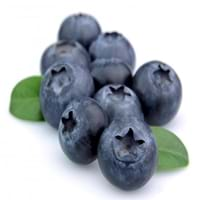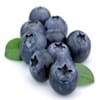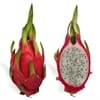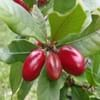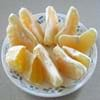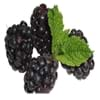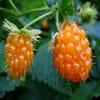Health Benefits
Cancer prevention, Heart care, Increases metabolic rate, Strengthening of bones, Treatment of skin Diseases
Cancer prevention, Cures gastro-intestinal troubles, Heart care, Muscle pain relief, Prevents blindness from diabetes
General Benefits
Anti oxidant properties, Boosts immune system, Digestive aid, Eye care, Improves blood circulation, Sore throat treatment
Boosts immune system, Digestive aid, Fights against infections, Helps in weight loss, Maintains healthy cholesterol level, Strengthens bones
Skin Benefits
Anti-aging benefits, Reduces wrinkles, Skin rejuvenation, Treatment of skin diseases
Anti-aging benefits, Skin rejuvenation
Hair Benefits
Protects hair
Promotes longer and healthier hair, Protects hair
Allergy Symptoms
Abdominal pains, Coughing, Diarrhea, Itching, Runny nose, Sneezing, Swelling of mouth, tongue or lips, Wheezing
Coughing, Diarrhea, Headaches, Hives, Itching, Labored Breathing, Nausea, Runny nose, Swelling of mouth, tongue or lips, Vomiting, Watery eyes
Side Effects
Allergic reaction
May cause abdominal pain, Diarrhoea, Mouth irritation, Throat irritation, Weight gain
Best Time to Eat
Best if taken as a breakfast (or empty stomach), As a snack in the late afternoon, Don't consume at night and before bed, Eat the fresh ones, avoid mixing with any other foods, don't eat after meal., Morning time (before lunch)
As a snack in the late afternoon, Don't consume at night and before bed, Eat the fresh ones, avoid mixing with any other foods, don't eat after meal., Morning time (before lunch), Strictly avoid empty stomach
Vitamin A (Retinol)
Not Available
Vitamin B5 (Pantothenic Acid)
Not Available
Vitamin B6 (Pyridoxin)
Not Available
Vitamin B9 (Folic acid)
Not Available
Vitamin C (Ascorbic Acid)
Vitamin E (Tocopherole)
Not Available
Vitamin K (Phyllochinone)
Not Available
Lutein+Zeaxanthin
Not Available
Calories in Fresh Fruit with Peel
Not Available
Calories in Fresh Fruit without Peel
Not Available
Calories in Frozen Form
Not Available
Calories in Dried Form
Not Available
Calories in Canned Form
Not Available
Type
Berry
Tree fruit, Tropical
Season
Summer
Spring, Summer
Varieties
Dwarf Huckleberry, Cascade Huckleberry, Mountain huckleberry and Blackwinter Huckleberry
Emperor fruit, Mauritiu, Sweet Heart, Brewster, Haak Yip and Bengal
Color
Blue, Purple, Purplish black
Bright red, Pink red
Inside Color
Purple
Greyish-white
Taste
Sweet
Crunchy, Juicy, Sweet
Origin
North America
China, Indonesia, Philippines, Vietnam
Grows on
Not Available
Trees
Soil Type
Loamy, Sandy, Well-drained
Alluvial, Loam, Well-drained
Climatic Conditions
Humid, Warm
Absence of strong wind, Cold, Dry, Without frosts
Facts about
- "I'm your huckleberry" is a way of saying that one is just the right person for a given job.
- The phrase "a huckleberry over my persimmon" was used to mean "a bit beyond my abilities".
- The seed of Lychee fruit is toxic & can adversely affect the digestive system.
- This fruit gives a smoky flavor when eaten dried.
- This fruit is a symbol of love and romance in China.
Top Producer
United States of America
China
Other Countries
Canada
Australia, India, South Africa, Thailand, United States of America
Top Importer
Canada
Hong Kong
Botanical Name
Gaylussacia brachycera
Litchi chinensis
Synonym
Not Available
Nephelium litchi
Subkingdom
Tracheobionta
Tracheobionta
Division
Magnoliophyta
Magnoliophyta
Class
Magnoliopsida
Magnoliopsida
Subclass
Asteridae
Rosidae
Order
Ericales
Sapindales
Family
Ericaceae
Sapindaceae
Species
G. brachycera
L. chinensis
Generic Group
Heath
Soapberry
Difference Between Huckleberry and Lychee
We might think that Huckleberry and Lychee are similar with respect to nutritional value and health benefits. But the nutrient content of both fruits is different. Huckleberry and Lychee Facts such as their taste, shape, color, and size are also distinct. The difference between Huckleberry and Lychee is explained here.
The amount of calories in 100 gm of fresh Huckleberry and Lychee with peel is 37.00 kcal and Not Available and the amount of calories without peel is Not Available and 66.00 kcal respectively. Thus, Huckleberry and Lychee belong to Low Calorie Fruits and Low Calorie Fruits category.These fruits might or might not differ with respect to their scientific classification. The order of Huckleberry and Lychee is Ericales and Sapindales respectively. Huckleberry belongs to Ericaceae family and Lychee belongs to Sapindaceae family. Huckleberry belongs to Gaylussacia genus of G. brachycera species and Lychee belongs to Litchi genus of L. chinensis species. Beings plants, both fruits belong to Plantae Kingdom.
